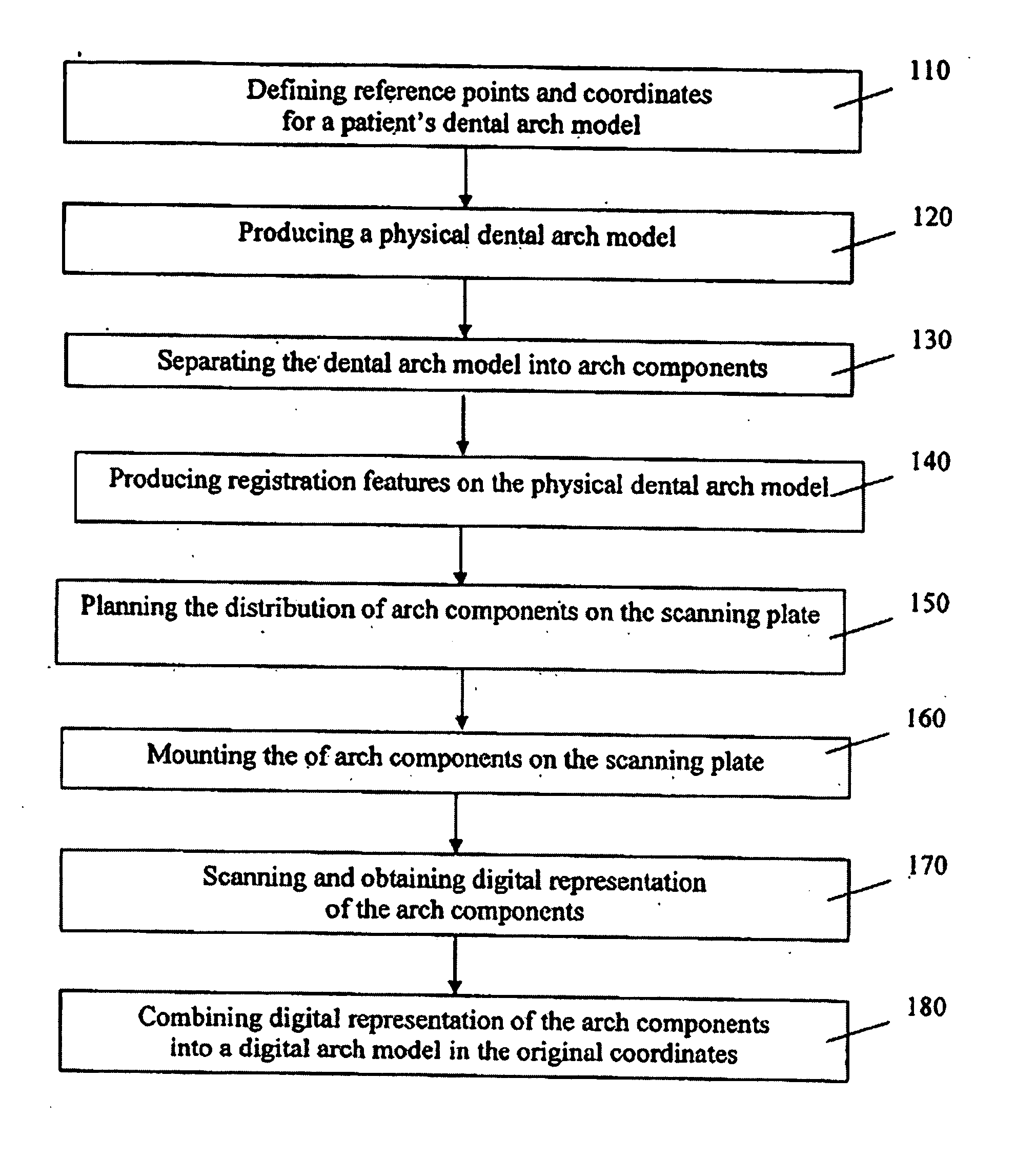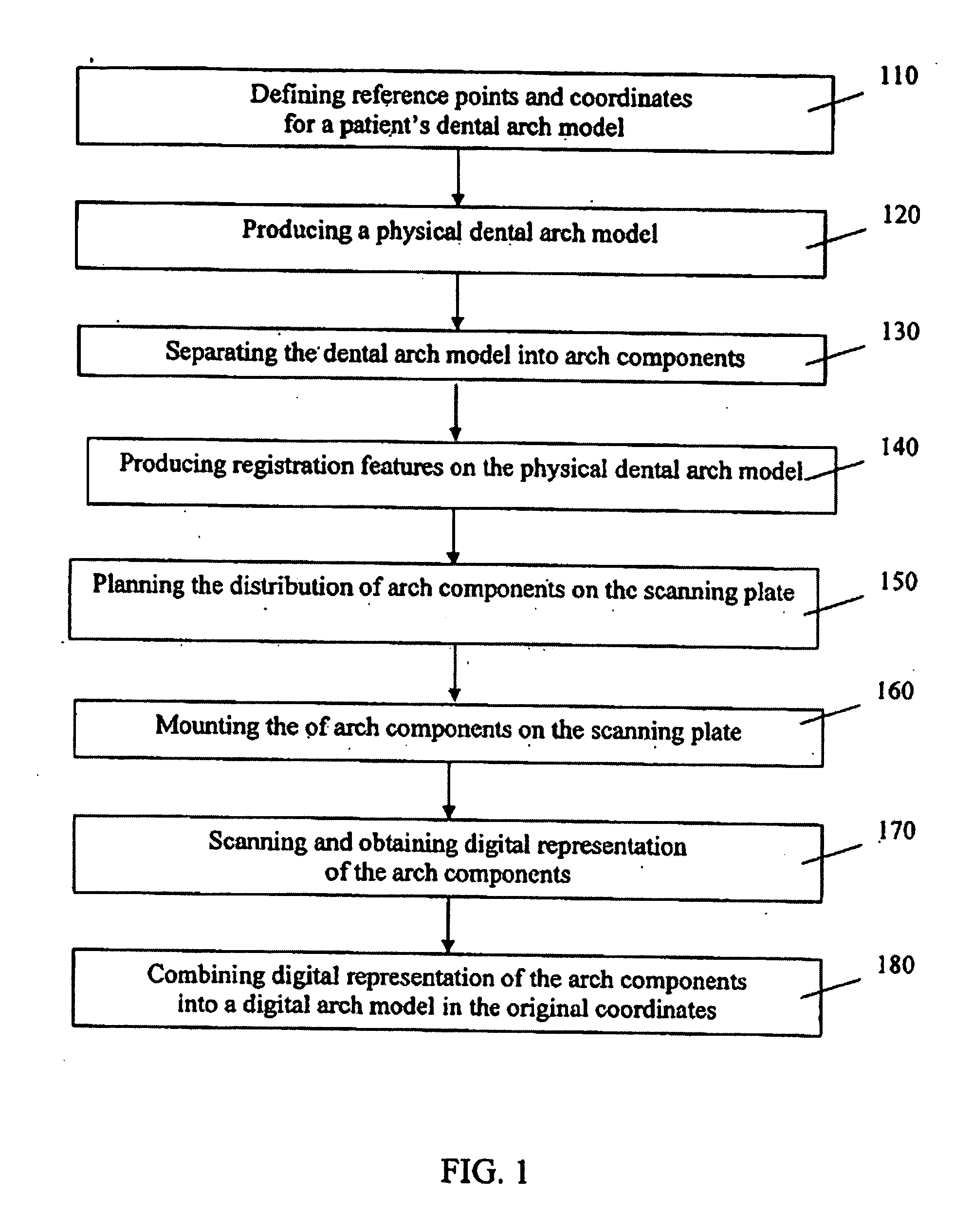Computer aided orthodontic treatment planning
a technology of orthodontic treatment and computer assisted, applied in the field of dentistry, can solve the problems of difficult (if not impossible) to accurately develop a visual three-dimensional image of an orthodontic structure, difficult (or impossible) to determine the ideal bracket location, and difficult (or impossible) to accurately estimate three-dimensional wire bends. to achieve the effect of better capture the surface profile of teeth
- Summary
- Abstract
- Description
- Claims
- Application Information
AI Technical Summary
Benefits of technology
Problems solved by technology
Method used
Image
Examples
examples
[0273] Another exemplary process for generating a digital dental arch model, is described in detail below. First, negative impressions of the patient's upper and lower tooth arches, and X-ray images of the teeth, are taken through procedures that are well known to one of ordinary skill in the art. Although the X-ray images are not required for generating the digital model of the tooth arch, X-ray images may be utilized either directly by the simulation program or indirectly by the operator to modify or enhance the digital tooth arch model. For example, the X-ray images may help in the placement of the fiduciary markers, or in modeling the roots of the teeth as described above.
[0274] The negative impression 10100 of the patient's tooth arch is coupled (e.g., glued, bonded, interlocked, etc.) to a container 10102, and a positive (or negative) dental mold may be made including fiduciary markers (e.g., pins) as described above. For example, a physical positive tooth model may be made f...
PUM
 Login to View More
Login to View More Abstract
Description
Claims
Application Information
 Login to View More
Login to View More - R&D
- Intellectual Property
- Life Sciences
- Materials
- Tech Scout
- Unparalleled Data Quality
- Higher Quality Content
- 60% Fewer Hallucinations
Browse by: Latest US Patents, China's latest patents, Technical Efficacy Thesaurus, Application Domain, Technology Topic, Popular Technical Reports.
© 2025 PatSnap. All rights reserved.Legal|Privacy policy|Modern Slavery Act Transparency Statement|Sitemap|About US| Contact US: help@patsnap.com



